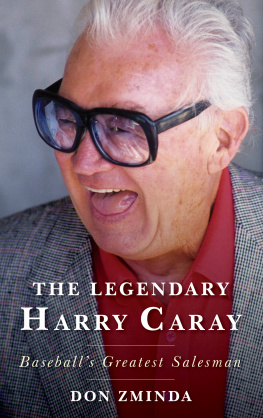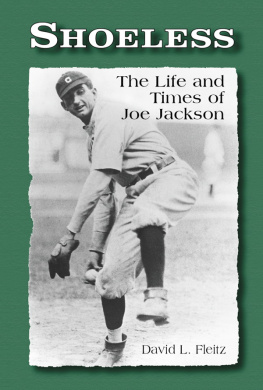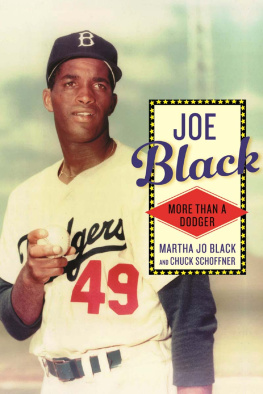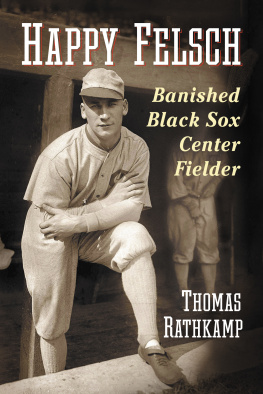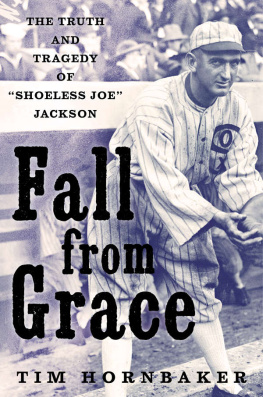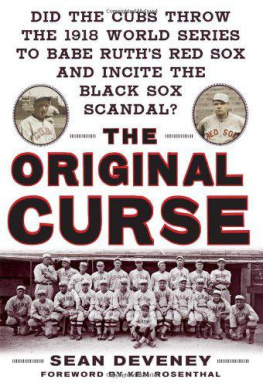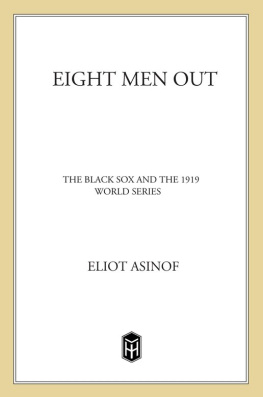A member of the Society for American Baseball Research since 1979, Don Zminda retired in 2016 after two-plus decades with STATS LLC, where he served first as director of publications and then director of research for STATS-supported sports broadcasts that included the World Series, the Super Bowl, and the NCAA Final Four. Don has also written or edited over a dozen sports books, including The Legendary Harry Caray: Baseballs Greatest Salesman (a finalist for the 2019 Casey Award), and the SABR publication Go-Go to Glory: The 1959 Chicago White Sox. A Chicago native, he lives in Los Angeles with his wife, Sharon.
During the 1970sOK, most of the 1980s alsoI was a classic underachiever: a graduate of Northwestern Universitys Medill School of Journalism with a job delivering mail on a beautiful lakefront route in Evanston, just north of the NU campus. I liked it, too: I wound up spending 21 years with the US Postal Service, and those were some of the best years of my adult life. I still had a dream to write, however, and I wanted to write about sports, particularly baseball. Somewhere along the way I landed a gig writing occasional articles for a little publication called the APBA Journal. The Journal was a monthly newsletter devoted to a baseball table game played with cards and dice, with the cards based on Major League seasons from past and present. When the APBA Game Company came out with a set of player cards for, say, the 1934 season, I would write an article for the Journal about the highlights of that season. My favorite historical season by far was 1920, and my favorite team was the 1920 White Sox. Joe Jackson! Eddie Collins! Eddie Cicotte! Buck Weaver! I loved the season, loved the team, loved the story of this amazing, but ill-fated, team. Sometime during the 1980s, when a writer for the APBA Journal asked me in an interview what my ultimate writing ambition was, I said: I want to write a book about the 1920 White Sox.
This is that book. It took me 35 years or so to finally get around to writing it, but a few thingsparticularly a new full-time job working in sports for STATS, Inc.delayed things a little. I am frankly glad I waited until now, because information about a subject like the 1920 White Sox is a whole lot easier to obtain than it was in 1985both because of the wealth of information now available in digital form, and because so many talented people have done research about the Black Sox in the intervening years. And also because, since 1985, so many people have helped me become a better writer, and (hopefully) a better person. I would like to thank some of them here.
Let me begin with a deep bow in gratitude to the members of the Black Sox Scandal Committee of the Society for American Baseball Research. The work of the committee, which was started by the late, great Gene Carney in 2009, blazed the trail for works such as mine. On this book in particular, several members of the committee were an enormous help. Jacob Pomrenke, the committee chairman, shared files, helped direct me to things I needed, and provided much wisdom and advice. Bruce Allardice, an expert on many Black Sox subjects, was particularly helpful with investigating the potentially fixed White Sox games of the 1920 season. Bill Felber, whose book Under Pallor, Under Shadow is a definitive study of the 1920 American League season, went out of his way to help with questions about individual White Sox games during the season. And legal expert Bill Lamb, the 2019 winner of SABRs most prestigious honor, the Bob Davids Award, could not have been more generous in sharing his thoughts about legal questions concerning the Black Soxand also with giving me permission to quote from his insightful email messages on these subjects.
Next, heartfelt thanks to Rob Neyer, who was gracious enough to write the foreword. Rob is an amazingly talented baseball writer, and a great person on top of that. As he notes in the foreword, Rob and I started working together long ago at STATS. At that time the company was new, and we were working our tails off to establish ourselves in the world of sports data and analysis. There were more than a few days when I wondered if Id made the right choice in leaving that beautiful lakefront mail route. At first I was a one-person STATS Publications Department. One day John Dewan, the head of our company, told me that it was time to double the size of the unit by hiring someone to assist me. That person was Rob... and though I cant say the workload got much easier, I can definitely say that working beside such a trusted and hardworking colleagueas well as someone who became a lifelong friendmade that stressful time in my life, both work and personal, a whole lot more manageable.
I also want to thank the couple who gave me my start at STATS, which was the beginning of the journey that led to this book: John and Sue Dewan. And a big round of thanks to Bill James, the man who inspired me into thinking I could turn my love for sports (and sports data and writing) into a career. Bill was the first person to quote my work in a major publication, his fabulous Baseball Abstracts. More than anyone, Bill James put my name on the map in the business that became my livelihood.
Through Bill James and STATS I met Craig Wright, whose indispensable newsletter, Pages from Baseballs Past, has explored Black Sox issues on numerous occasions (along with hundreds of other historical baseball subjects). Thanks to Craig, a longtime friend, for permission to quote his research on Fred McMullins role in the scandal. Additionally, Craigs deep insight into Black Sox matters, as expressed in many of his newsletters, have helped guide my own thinking.
Mike Lynch has written extensively about the Black Sox and their era, including a wonderful book called It Aint So: A Might-Have-Been History of the White Sox in 1919 and Beyond. In the book, Mike used simulations to project how the Sox and their banished players might have fared had their Major League Baseball careers continued. Lefty Williams, 300 wins? Joe Jackson, 3,400 hits? It might well have happened. Mike also shared photos of the Black Sox with me, and his own worksincluding the fabulous Seamheads.com Negro Leagues databasewere tremendously helpful.
I joined SABR in 1979, and my interactions with other SABR members over the years have been a constant delight, along with greatly increasing my knowledge of many baseball subjects. A number of SABR members are writers whose work has inspired me, and whose advice has helped guide my own work. I would like to salute a few of them who have particularly helped with my writing (with apologies to anyone I may have inadvertently left out): Jean Ardell, Mark Armour, Rob Fitts, Noel Hynd, Maxwell Kates, Dan Levitt, Andy McCue, Bill Nowlin, Ron Rapoport, Lyle Spatz, Steve Steinberg, Cecilia Tan, John Thorn, and Jerry Wood. Thanks also to Scott Bush and Deb Jayne for their gracious help when I visited the SABR office in Phoenix.
While I dont have individual names to thank, the staffs at the Chicago History Museum, the Harold Washington Library in Chicago, and the San Diego Public Library were a great help to me with manuscripts and microfilm necessary for my research. Thanks also to Cassidy Lent of the National Baseball Hall of Fame and Museum for his help with player files.
As a still-inexperienced 72-year-old author, I feel blessed to work with a helpful and supportive publisher. Thanks to Christen Karniski, Julie Kirsch, Erinn Slanina, Jessica McCleary, and the staff at Rowman & Littlefield for all you do to help my work make it into print. It is great to be working with you again.
On a personal level, I would like to thank some longtime friends and supporters, some of whom date back to my postal years and even earlier, when my path to success in sports and writing was a far-off dream: John and Sharon Chornish, Coleman and Nadine Colla, Mitchell and Donna Harrison, Brian Hayes and Deb Segal, John and Jan McCarron, Dave and Dena Mundo, Bob Zaborowski and Anita Koch, and Phil, Peg, Allison, and Philip Zminda, along with Matt Brown, Ethan Cooperson, Chris Dial, Paul Greenberg, Deb Klein, Ron Klemp, Skip Lawson, Jack March, Chuck Miller, Tony Nistler, John Ranos, Mike See, Meghan Sheehan, Stuart Shiffman, Jo Ann Shrawder, Aneel Trivedi, John Turnbull, and John Ungashick.


